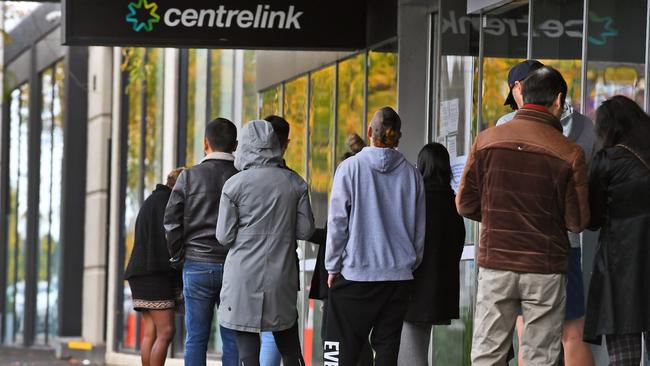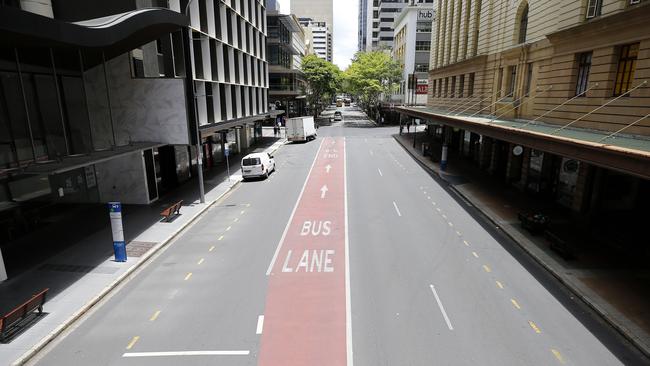Spike in ‘zombie’ companies going into administration fuels fear of insolvency wave
A recent spike in companies going into administration is a worrying sign given pandemic-related assistance is about to end, with job losses a real possibility.

Companies
Don't miss out on the headlines from Companies. Followed categories will be added to My News.
There are worrying signs company collapses could leap back to historical heights as pandemic-related assistance draws to a close after propping up “zombie” enterprises that would have otherwise failed.
CreditorWatch’s latest Business Risk Review data released on Tuesday shows external administrations spiked by 61 per cent in February – the highest they have risen for a year.
“This figure is likely to rise again in the coming months, as JobKeeper ends and the three-month reprieve on credit arrangements for struggling smaller businesses comes to a close,” chief executive Patrick Coghlan said.
The federal government implemented a temporary moratorium on insolvent trading last year to allow businesses that were unable to pay their debts prior to the pandemic to trade through it, giving them time to right their operations as the economy normalised.
It ended on December 31 but businesses with debts of less than $1m were given extra time to work with an insolvency practitioner to restructure their operations and come to agreements with creditors to allow them to continue trading.
The moratorium ends on March 28, along with the JobSeeker wage subsidy.

“This could prompt a rash of insolvencies and, subsequently, redundancies, which could be a destabilising force on the local economy,” Mr Coghlan said.
“The number of arrears and court cases related to bad debts tend to rise before insolvency numbers lift, and whilst there’s no evidence of this yet, an increase following the end of government incentives at the end of March is a strong possibility.”
The number of court cases in February was down 56 per cent compared with a year earlier, while payment times only increased marginally month-on-month.
Healthcare was by far the worst-performing sector when it came to payments, as it remained focused on the pandemic to the detriment of the health system as a whole, CreditorWatch said.
Administration and support services also suffered as offices remained empty through the health crisis, but the sector is starting to normalise as workers return to offices.

“Overdue payment times are a key indicator of a struggling sector,” CreditorWatch chief economist Harley Dale said.
“It’d be foolish to expect any of these industries to magically bounce back after the aftershock of the pandemic.
“This year will all be about slow recovery.”
Encouragingly, four out of 19 industry groups actually reported a decrease in the time it took to pay their bills in February compared with January.
Meanwhile, the latest NAB business confidence index shows promising signs of a sentiment bounce back with the easing of COVID-19 government restrictions and the rollout of vaccines boosting business morale.
“Aussie business confidence hit 11-year highs in February, with conditions at the best level in 30 months,” CommSec senior economist Ryan Felsman noted.
“Importantly, employment, trading and profitability all lifted in February.”
Originally published as Spike in ‘zombie’ companies going into administration fuels fear of insolvency wave


